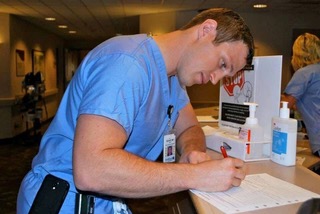Understanding the Athletic Heart
When it comes to sports medicine, few areas are as crucial as cardiovascular health. Athletes push their bodies to the limits, and their hearts often undergo significant adaptations to meet these demands. Dr. Kent Scheff, a renowned expert in sports cardiology, emphasizes the importance of understanding these changes. “The athletic heart is a marvel of human physiology,” he explains. “It undergoes structural and functional modifications that allow athletes to perform at peak levels.” These adaptations can include increased heart size, enhanced stroke volume, and improved cardiac output. However, these changes can sometimes mimic cardiac pathologies, making it essential for sports medicine practitioners to differentiate between normal adaptations and potential heart conditions.
Screening and Prevention: Safeguarding Athletes’ Hearts
One of the most critical aspects of sports cardiology is the implementation of effective screening protocols. Dr. Kent Scheff advocates for comprehensive cardiovascular screening for athletes at all levels. “Early detection of potential cardiac issues can be life-saving,” he states. These screenings typically involve a thorough medical history, physical examination, and often include electrocardiograms (ECGs) and echocardiograms. The goal is to identify any underlying cardiovascular conditions that could put an athlete at risk during intense physical activity. Conditions such as hypertrophic cardiomyopathy, long QT syndrome, and Wolff-Parkinson-White syndrome are of particular concern in the athletic population. By implementing robust screening programs, sports medicine professionals can help prevent tragic events and ensure athletes can compete safely.
Managing Cardiovascular Conditions in Athletes
For athletes diagnosed with cardiovascular conditions, the path forward requires careful consideration and management. Dr. Kent Scheff emphasizes the importance of individualized care in these cases. “Each athlete’s situation is unique, and we must balance the risks of competition with the benefits of physical activity,” he notes. This often involves a multidisciplinary approach, bringing together cardiologists, sports medicine physicians, and other specialists to create comprehensive treatment plans. In some cases, athletes may need to modify their training regimens or even consider retiring from competitive sports. However, with proper management and monitoring, many athletes with cardiovascular conditions can continue to participate in sports safely.
The Future of Sports Cardiology
As our understanding of the athletic heart continues to evolve, so too does the field of sports cardiology. Advancements in imaging technologies, genetic testing, and wearable devices are opening up new possibilities for monitoring and managing athletes’ cardiovascular health. These innovations promise to enhance our ability to detect potential issues early and provide more personalized care. Moreover, ongoing research into the long-term effects of intense athletic training on cardiovascular health is shedding light on how we can better support athletes throughout their careers and beyond. As we look to the future, it’s clear that the intersection of cardiology and sports medicine will continue to be a dynamic and crucial area of study, ensuring that athletes can push their limits while maintaining optimal heart health.
The field of sports cardiology plays a vital role in safeguarding athletes’ health and enabling peak performance. From understanding the unique adaptations of the athletic heart to implementing comprehensive screening protocols and managing cardiovascular conditions, sports medicine professionals are at the forefront of ensuring athletes can compete safely and effectively. As we continue to advance our knowledge and technologies in this field, we can look forward to even better care and outcomes for athletes at all levels of competition.





